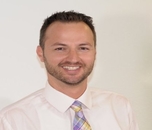Day :
- Patient Safety
Chair
Special Session
Session Introduction
Martin Egerth
Lufthansa Flight Training, Germany
Title: Why do we need more than technical and procedural competencies in the medical industry to improve patient safety?
Time : 11:20-12:20

Biography:
Abstract:
Pia Knudsen
Danish Safety Authority, Denmark
Title: The Danish patient safety database and identification of high-risk medicines

Biography:
Abstract:
Saraswati Aryasomayajula
Luton and Dunstable University Hospital, UK
Title: A quality improvement project addressing VTE prophylaxis: factors contributing to compliance

Biography:
Abstract:

Biography:
Abstract:

Biography:
Abstract:
- Infection Prevention & Control
Chair
Special Session
Session Introduction
Sari Himanen
University in Tampere, Finland
Title: Why do we need more than technical and procedural competencies in the medical industry to improve patient safety?
Time : 12:10-13:10

Biography:
Abstract:
Martin Egerth
Lufthansa Flight Training, Germany
Title: Why do we need more than technical and procedural competencies in the medical industry to improve patient safety?

Biography:
Abstract:
- Medication Safety
- Nursing Education & Practice
Session Introduction
Rohini A Mehta
American College of Nursing, USA
Title: Cultural is important in healthcare

Biography:
Abstract:
- Patient Safety & Nursing Education
Session Introduction
Theeb M Almotairi
Royal Commission Medical Center, Saudi Arabia
Title: The relationship between structural empowerment and the patient safety culture in the Saudi public hospitals

Biography:
Abstract:
- Medication Safety
Session Introduction
Sachin Raval
Apollo Hospitals International Limited, India
Title: High alert medications

